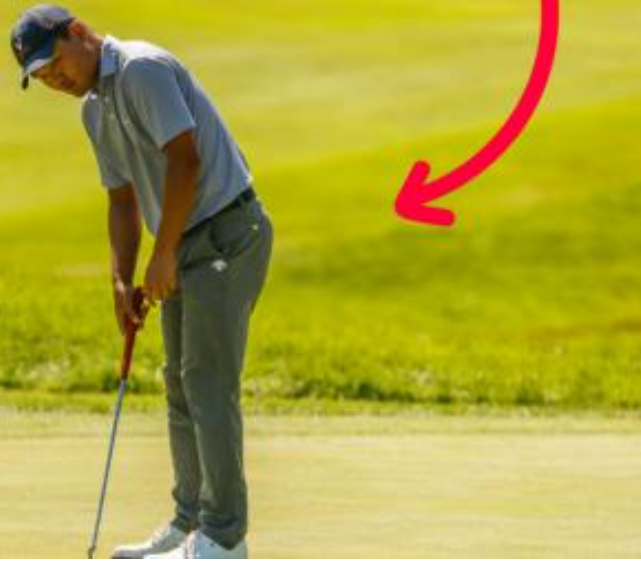CHASKA, MINN. — Tiger Woods’ loss to Y.E. Yang in the 2009 PGA Championship was stunning in that it was the first time Woods had lost a major championship after being the 54-hole leader. What was also stunning was the way he lost it—by missing one crucial 10-foot putt after the next at Hazeltine National.If you rewatch the final round of the PGA, you’ll notice Woods missed putts inside 10 feet on Nos. 1, 10, 12, 13, 15, 17 and 18. What do they all have in common? Each time, Woods missed on the high side of the hole. After nearly all of them, Woods was seen gesturing that he was shocked the putts weren’t breaking more.Interestingly enough, players at this week’s U.S. Amateur at Hazeltine National are also noticing many of their putts are missing on the high side and not breaking as much as they anticipate.“I feel like a lot of people are overreading a lot of putts,” said Garrett Engle, a senior at Chattanooga whose never-before-seen grip helped propel him to a marathon victory in the Round of 64 on Wednesday. The World’s No. 1-ranked amateur, Luke Clanton, who also won his opening-round match, agrees the greens aren’t breaking as much as players think.Tim Hanline, who has been a member at Hazeltine for about four years and is volunteering this week, says it’s not just golfers new to the course who get confused. Hanline noted that members often struggle because they play for too much break. He notes that Hazeltine’s caddies regularly advise half as much break as Hanline originally sees.What’s going on here? It turns out, this is more than a big coincidence, and there are a couple factors at play here that the rest of us can learn from.More From Golf DigestU.S. Amateur U.S. Amateur contender rides never-before-seen grip to marathon victory at HazeltineLegends Surprising U.S. Amateur medalist gives all-time blunt answer about what separates him from tourney’s bigger namesOver before it began 11 highly-ranked players who missed match play at the U.S. AmateurFirst off, as we recently covered in a Golf Digest Happy Hour hosted by PGA Tour putting coach Ralph Bauer, putts on fast greens will break more than ones on slow greens, due to the “slower initial ball speed. Gravity has more effect,” Bauer said.While that seems to suggest that players would miss on the low side on fast greens like Hazeltine, which are running about 13 on the Stimpmeter, Bauer says not necessarily so.U.S. Amateur competitors, like medalist Jimmy Ellis seen here, are missing plenty of putts on the high side.“One of the cool things that I found is if you hit two putts equally hard—one high and one low—the low one is going to run out much more,” he said during the Happy Hour. “The high one is going to be fighting the hill, and it’s not going to roll out as much. This low one is going to find that slope and run out. Both of those putts can be hit the same speed, but there can be a foot difference very easily based on the line you take.”On greens as penal as Hazeltine’s the penalty for getting a putt traveling on the low side of the hole could be the difference between a tap-in and a three-foot slider. Elite players recognize this and thus try to play the highest line possible.“I think it’s because it’s so fast that you play it so high to let it drip in, and sometimes it doesn’t,” Clanton said.On top of that, Engle has been noticing that the greens are so quick that balls are occasionally gliding on the surface instead of rolling. During this glide phase, he finds that the ball doesn’t break as much.“I think just because they’re so fast, a lot of people are hitting it and it’s just gliding more so than breaking and catching the break. On fast greens a lot of times you get a lot of that glide,” he said.To be clear, missing putts on the high side is not bad—in fact, as stats gurus like Scott Fawcett preach, speed is far more important than line in putting. Pair this with Bauer’s insights about putts of the low side rolling out more and it’s clear why players will try and play as much break as possible.Yet, on shorter putts inside 10 or 15 feet, when three-putts are rare, reading too much break could be costly as the week continues at the U.S. Amateur. While the strategy might work on lag putts, players will need to adjust their eyes and play slightly less break on the shorter ones.
